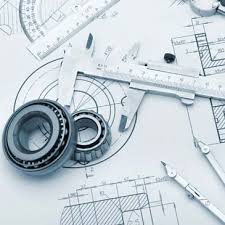Aligning Lean Manufacturing and Continuous Improvement Practices
Demand-driven manufacturing (DDM) is an approach to manufacturing where production is based on actual demand rather than forecasts. DDM enables a synchronized, closed loop between customer orders, production scheduling and manufacturing execution – all while simultaneously coordinating the flow of materials and resources across the supply chain. The terms Pull-based manufacturing and Just-in-Time (JIT) manufacturing are also used within the context of DDM and the flow of materials.
Synchronizing engineering and manufacturing
Engineer-to-Order (ETO) product designers attempt to provide “mass customization” of unique, one-of-a-kind products better, faster, and cheaper than competitors. DDM methods and systems allow for many or all portions of the ETO process to be automated, providing quicker turnaround, lower engineering costs, and consistent adherence to product rules and standards. Extending Demand/Pull automation capabilities beyond manufacturing to the engineering group, ensures that they are in alignment with manufacturing production, and ultimately, customer needs. We’ve found that engineering groups who are engaged in this way realize significant increases in Engineering throughput.
ETO, along with MTO (made-to-order), CTO (configure-to-order) and MTS (make-to-stock) environments can improve production flow and throughput (profitability) through synchronization (people, process, machines, materials and data) enabled using demand-driven manufacturing methodologies.
Process automation and big data
Synchronization of data improves processes, production flow and visibility. The practice of analyzing, documenting, optimizing, and automating manufacturing processes starts by evaluating value-added tasks. Well-developed DDM systems create a seamless link from initial client contact throughout the supply chain to customer delivery. Automation of these processes improves the accuracy of the information transferred and ensures the repeatability of the value added tasks performed.
In addition to automation, effective ETO technology solutions drive engineering innovation. Data integration and aggregation with machines and systems across the enterprise provides insight to develop new features and additional product offerings. Instant visibility into design requirements, compliance, quality, process and machine data through a single window not only empowers engineering with essential product development knowledge and lessons learned, but provides an information platform from which they can direct continuous improvement efforts.
Connecting and communicating through a demand-driven ecosystem
ETO manufacturers invest in demand-driven methods based on (among other things) the value of significantly reducing lead times, engineering and manufacturing cycle times, and product rework while improving customer service, internal communication, capacity and throughput. There is additional value to the clients of ETO manufacturers when their product is of high quality, designed precisely to their requirements and delivered on time and within budget. As such, demand-driven technologies for the ETO market extend value when they create a single version of the truth through an ecosystem that connects sales/customer service, engineering, operations and the shop floor with the same, real-time information.
With nearly 60% of ETO sales now based globally, the ability to operate in a web-based data-driven environment becomes more critical. ETO manufacturers build unique products designed to customer demand (specifications). Each product requires a unique set of item numbers, bills of material, and routings. Estimates and quotations are required to win business.
Unlike standard products, the customer is heavily involved throughout the entire design and manufacturing process. Engineering changes are typical and material is not purchased for inventory, but for a specific project. All actual costs are allocated to a project and tracked against the original estimate. Once complete, the product is typically installed at the customer’s site. In most cases, aftermarket services continue throughout the life of the product. And while it sounds onerous, these one-of-a-kind manufacturers are thriving because they recognize the value (and growing market opportunity) in implementing manufacturing solutions based on actual customer demand. Case studies demonstrate that margins are better when proven, demand-driven solutions geared for discrete manufacturers are implemented.
If you work in an ETO environment, I’d welcome your comments and thoughts around demand-driven and Lean practices.
Recommended reading:
White Paper: Why Become More Demand-Driven? Responding to Customer Needs
Article: What is Demand-Driven Manufacturing?


